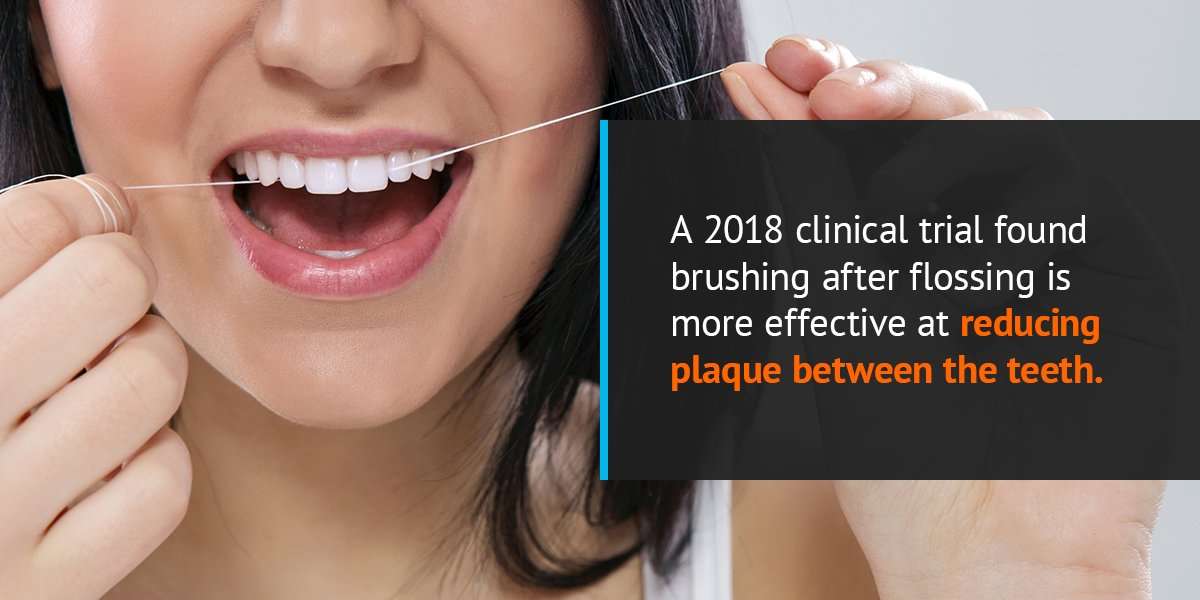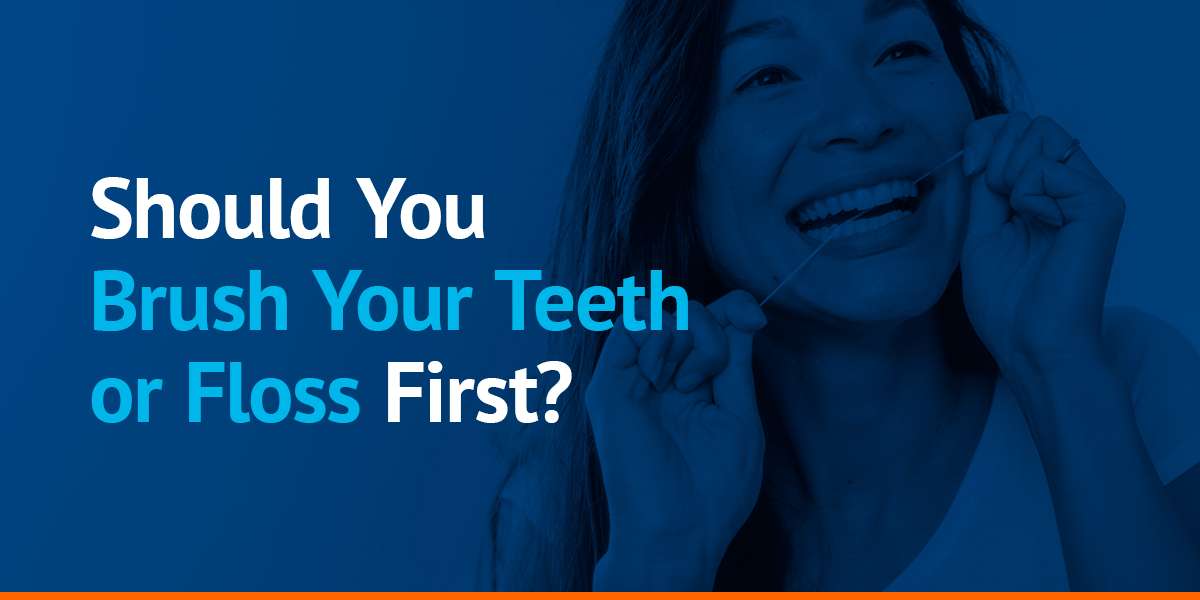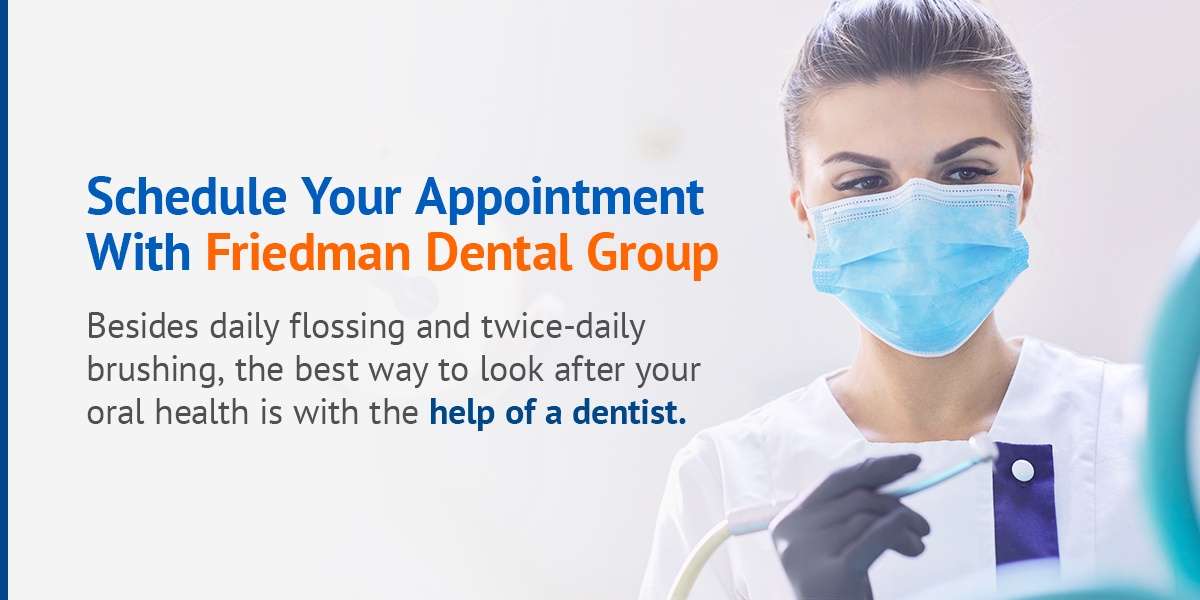Brushing and flossing your teeth in any order is a fantastic way to maintain those pearly whites. Any dentist will tell you that many people neglect daily flossing, so if you floss regularly, you’re getting some fantastic benefits no matter when you do it. That said, there is a right and wrong way to brush and floss to achieve the best clean and the most health benefits. Let’s explore what order to brush and floss, alongside some other oral hygiene tips.
The Importance of Brushing and Flossing
Brushing and flossing your teeth prevents tooth decay and gum disease. It also lifts stains and controls plaque buildup, which can discolor the teeth. Flossing is critical because it reaches the tight spaces between your teeth and near your gums, which can hide food debris, sugars, and acids.
Brushing removes plaque, bacteria, and food particles, which may contribute to tooth decay. It also prevents bad breath. Missing even a few days of brushing can prompt the onset of gum disease. Brushing with toothpaste offers additional benefits. The fluoride in toothpaste can prevent oral bacteria growth and remineralize weakened tooth enamel, reversing early tooth decay.
Brushing and flossing are essential for adults and children alike. Though kids don’t grow their adult teeth right away, learning good oral hygiene early sets them up for a healthy smile throughout their lives. A cavity in a baby tooth may spread through the roots and into the adult teeth or cause them to come in crooked. And while their baby teeth might not be here forever, their gums will.
The Importance of Brushing vs. Flossing
Let’s say one morning you’re running late, and you only have time to floss or brush as you’re heading out the door. Is flossing or brushing more important? Recent studies show only 30% of Americans floss daily, and a shocking 32% of people never floss. While our collective habits might tell us brushing is more important, you may be better off skipping the toothbrush in favor of some dental floss.
Flossing removes plaque from those hard-to-reach places between your teeth and below the gum line, where the most harmful microbes live. By flossing regularly, you prevent gingivitis, periodontitis, and other painful gum diseases. However, the benefits of brushing and flossing are most effective when combined. They each focus on different parts of the mouth, and it takes both to achieve a full clean.

What Comes First, Flossing or Brushing?
Flossing before or after brushing offers immense benefits over skipping it altogether. But is there a correct order to give you the whitest smile and the freshest breath? If you’re not sure when to floss your teeth in relation to brushing, you’re not alone. It wasn’t until fairly recently that dental researchers discovered flossing before brushing is best. A 2018 clinical trial found brushing after flossing is more effective at reducing plaque between the teeth. It also makes it easier for fluoride to reach these tight spaces.
Flossing first loosens the bacteria, plaque, and debris between the teeth. Then, brushing can more effectively remove them from the mouth. If your teeth have plaque between them, brushing can’t deposit fluoride to these areas. When you remove this plaque first, your whole mouth can benefit more from the fluoride toothpaste.
Flossing first also reduces your chances of developing gum disease. Brushing first can inadvertently push plaque and food particles into your gums rather than remove them. If this food is allowed to stay below the gum line, bacteria can develop and cause gingivitis. Gingivitis, if left untreated, will eventually develop into periodontal disease.
Another benefit of flossing first is it reduces how much plaque you swallow. Plaque is composed of bacteria, and when you ingest too much of it, it can transfer to other parts of the body, like the kidneys or the heart. It increases your risk of developing heart disease and high blood pressure. By flossing first, you reduce the amount of plaque entering your system.
How to Floss Properly
Dental experts recommend flossing before brushing at least once a day. Improper flossing can irritate your gums and won’t adequately remove plaque and food particles. Here’s how to floss to maintain your happy, healthy smile:
- Grab a piece of floss 18 inches-24 inches long.
- Wrap your floss around your two middle fingers, leaving 1 inch-2 inches of floss stretched taut between them.
- Use your thumbs and forefingers to pull the floss tight.
- Insert the floss between two teeth and gently rub up and down, so the floss moves against both teeth.
- To avoid scratching your gums, don’t rub back and forth against or into your gums.
- When the floss reaches your gums, curve it so it hugs the base of your tooth and can safely reach down into your gums. Repeat this motion for the other tooth.
- Move to a new section of floss and repeat these steps from tooth to tooth until you’ve flossed your whole mouth.
Dental Floss Alternatives
The number one reason people don’t floss their teeth is because it’s time consuming. As many as 55% of people with less-than-stellar flossing habits cite this reason, and another 16% say it’s too painful. The good news is there are a few other proper ways to floss your teeth. If the traditional dental floss is taking too long or causing you pain, consider one of these two dentist-approved alternatives:
- Water irrigators: A water irrigator is a popular choice for people with sensitive gums. These small electric tools spray a thin stream of water between your teeth, using pressure to remove plaque and food particles.
- Interproximal brushes: An interproximal brush is the same shape as a bottle brush, shrunk down to fit between your teeth. The thin, flexible brush has a round brush head that can dislodge food and plaque between the teeth. It saves time and is especially useful for people with braces who can’t use regular dental floss.
How to Brush Your Teeth Properly
Once you’ve flossed, you can move on to brushing. While you only need to floss once a day, you should brush at least twice a day for at least two minutes each time. Wondering when to brush your teeth? One of the best times to brush your teeth is whenever you can manage two minutes to spare.
If you want to get the most benefits out of brushing, some dentists recommend it after each meal. However, twice a day, once in the morning and once before bed, is an excellent place to start. Brushing before bed can remove the food particles accumulated throughout the day. Brushing again in the morning can freshen breath and clear the plaque and bacteria that formed throughout the night.
Here’s a 10-step brushing process you can use or teach your kids to maintain a clean, healthy mouth:
- Hold your toothbrush bristles at a 45-degree angle to your gums.
- Move your brush in short strokes, about the size of a single tooth.
- Brush back and forth along the outside surfaces, and remember to apply gentle pressure.
- Using the same motion, brush along the tops of your teeth or the chewing surfaces.
- To reach the inside surfaces of your teeth, hold the brush vertically and move in short up-and-down motions.
- Brush your tongue from back to front to prevent bad breath.
- Rinse your toothbrush.
- Resist the urge to rinse out your mouth right away — this could remove the fluoride too soon.
- If you use a mouthwash, wait a few hours after brushing.
- If you use a fluoride mouthwash, wait at least 30 minutes after rinsing to eat or drink.
Schedule Your Appointment With Friedman Dental Group Today
Besides daily flossing and twice-daily brushing, the best way to look after your oral health is with the help of a dentist. Experts recommend visiting your dentist for cleanings every six months. If you’re in the South Florida area schedule your appointment today.
Last Reviewed By Dr. Eli Friedman on January 5, 2021

